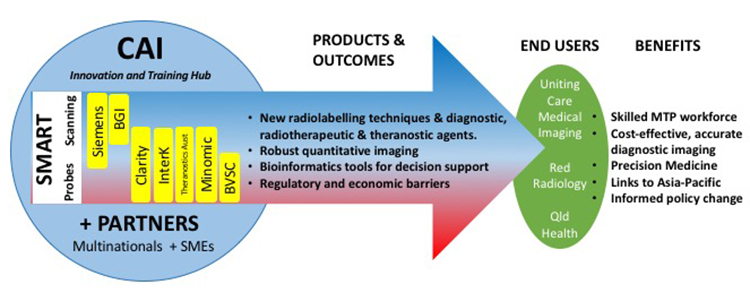The ARC Training Centre for Innovation in Biomedical Imaging Technology (CIBIT) brings together innovation and technology across the industry partners for transformational breakthroughs in biomedicine. The Centre has been established with Australian Government funding of $4.7 million through the Australian Research Council Industrial Transformation Research Program and $3.8 million in cash and in-kind contributions from industry partners.
Biomedical imaging has been one of the most important advances in the history of medicine. Capable of ascertaining the location, nature and extent of disease with high accuracy and sensitivity, it has become an integral part of modern health care; Medicare Australia expends >$3 billion a year on diagnostic imaging. However, health care faces converging global megatrends: rising life expectancy, Precision Medicine - disease prevention, diagnosis and treatment tailored to the individual patient,the shift to digital technologies, rising costs and tightening public sector budgets.
OUR MISSION is to deliver industry-ready scientists and professionals through multidisciplinary collaborations in industry-driven research that effectively translates innovative biomedical imaging technology enabling us to achieve OUR VISION of a healthier Australia by transforming the Medical Technologies and Pharmaceuticals sector.
CIBIT will train more than 20 industry ready innovation scientists who will undertake industry-driven research to overcome bottlenecks in the development and application of novel diagnostics, therapeutics and theranostics (combined therapeutics and diagnostics) for important diseases like cancer.
CIBIT’s central hub is based at the Centre for Advanced Imaging at The University of Queensland, a state-of the-art multimodal, multidisciplinary imaging research facility, unique in Australia and one of only a handful world-wide. CIBIT aims to build multidisciplinary links between researchers at the University of Queensland and its industry partners to develop ‘smart’ probes and ‘smart’ scanning, harnessing the digital revolution for better, cost effective diagnostic imaging and improved health outcomes.

